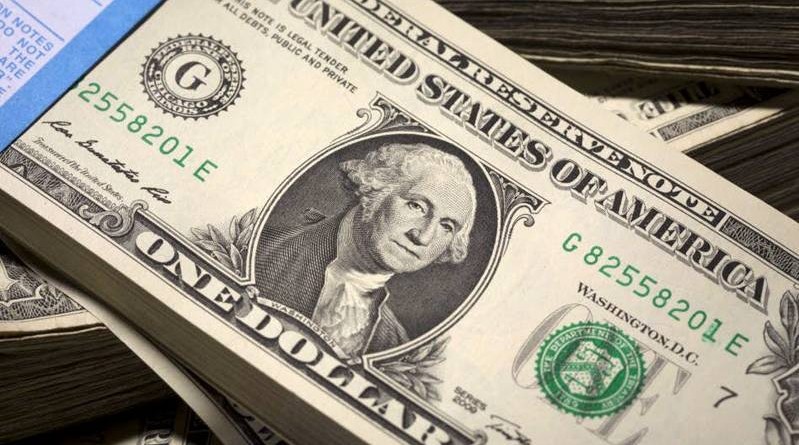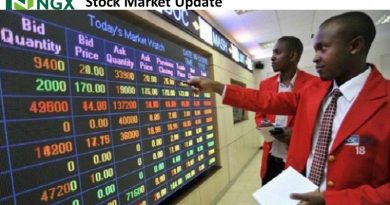U.S. inflation is the world’s most important economic variable
U.S. inflation is the world’s most important economic variable. That proposition is explained by its corollary: Rising inflation is the only problem the U.S. Federal Reserve cannot solve by increasing its money supply.
The Fed can deal with structural problems in credit markets by means of enhanced supervision, regulatory provisions and, all else failing, by open-ended lending in cases of systemic threats to the financial system’s stability.
But none of those measures are applicable to situations of accelerating inflation and a deteriorating outlook for the value of fixed-income assets. That is a problem the Fed must address with sustained liquidity withdrawals, increasing credit costs and the ensuing growth recession of the U.S. economy.
The rest seems obvious: By virtue of its size and powerful policy transmission channels, the American economy sets the pace to demand, output and employment in the rest of the world.
That’s a permanent feature of the world economy some people, and countries, mistakenly take for a thing of the past. Here are a few thoughts on how the Fed will set them straight in the months ahead.
Last week’s 15 basis points increase in the yield of the Treasury’s benchmark 10-year note is a clear signal that bond markets are asking for rising inflation premiums to hold the government’s long-term liabilities. In other words, unhinged inflation expectations are indicating markets’ declining confidence in the Fed’s ability to deliver stable prices over the relevant investment horizon.
Policy targets are not good measures
The stage is now set for a new round of an ominous tug-of-war between the Fed and global financial markets regarding America’s short- and medium-term inflation outlook.
The Fed is starting the fight with a significant disadvantage: It has already breached inflation targets, and it is conducting a strange “market guidance” with an unending flow of confusing and contradictory statements that are merely providing trading fodder for in-out market punters.
Speeches sounding like a victory lap that inflation has now reached the upper limit of the Fed’s 2 percent target — presumably referring to the Fed’s own pick of an arcane private consumption expenditure (PCE) index, excluding food and energy — while ignoring recent 2.9 percent and 2.7 percent price hikes in American consumer baskets (CPI) are funny games that will not fool homemakers and investors.
Reading those speeches last week, I was wondering whether the Fed’s officials ever heard of the Goodhart’s law: “When a measure becomes a target, it ceases to be a good measure.” The economist Charles Goodhart was one of their colleagues who served, in late 1990s, as a member of the Bank of England’s Monetary Policy Committee.
For my part, I was wondering for quite some time about an apparent indifference to an entire range of indicators signaling rising inflation pressures. That includes the Fed’s own target, the core PCE, which kept advancing to 2 percent from 1.5 percent since the second half of last year.
It was clear over that period that costs and prices were responding to rising capacity pressures in labor and product markets of an economy driven by an explosive mix of monetary and fiscal stimuli.
Last Wednesday, a survey of industries representing 90 percent of the U.S. economy showed a soaring production activity, strong price increases during September, and a period of nearly three years of sustained and consecutive monthly price gains.
A tough inflation mix
On top of that, we now have a trade policy that has set in motion an import substitution process. Pervasive import tariffs will continue to push up prices of imported goods and services, and they will also stimulate local production in the U.S. at a time of very tight labor markets, high capacity pressures on factory floors and runaway energy prices.
Facing all that, the Fed sees a so-called Goldilocks economy. Last week’s statements exuded confidence about a “remarkably positive” economic outlook, and an economic expansion that can continue “indefinitely.” All that can be achieved, the Fed said, with carefully paced interest rate increases to keep prices under control and forestall inflationary flare-ups.
Markets have been begging to differ for some time, and so has yours truly. The long brewing suspicions that the Fed could no longer deliver stable prices in a growing economy have led to a sharply steepening yield curve — an event that always reflects a resounding vote of no confidence in the monetary policy.
The way forward is clear: The Fed will have to step up its liquidity withdrawals well beyond the recent monthly pace of about $30 billion. The tightening money market conditions will then lead to rapidly rising credit costs along the entire term structure.
Expect no quick action, though. Political contingencies over the next four weeks will weigh heavily on the Fed’s interest rate decisions. In that context, the incoming report on consumer prices will probably be treated as a non-event because they are not an official inflation target.
But that is unlikely to keep bond markets quiet. The proverbial writing is on the wall, and the message is a mixture of America’s very loose economic policies, worsening foreign trade disputes, soaring energy costs and dangerous military confrontations.
Rapidly rising energy prices and unsettled trade problems with China, Japan and the European Union will continue to disrupt asset trading because they have a direct bearing on inflation and economic activity. Those events are directly linked to escalating political and security problems.
China, for example, is refusing to accept U.S.-imposed economic reforms, and to grant liberal access to its markets as a condition of a mutually acceptable bilateral trading regime. The acute problem of U.S.-China trade has always been part of intractable security issues on the Korean Peninsula and in the South and East China Seas.
Investment thoughts
U.S. inflation has reached a point in an accelerating economy where the Fed needs to step in with a prompt and credible action to anchor inflation expectations. Markets are signaling that such measures are long overdue.
The Fed is now well beyond the stage where it could think of fine tuning the economic activity in an environment of stable costs and prices. The U.S. economy is moving along at twice the rate of its noninflationary growth potential.
That is unsustainable. As in the past, the restoration of American price stability will lead to a growth recession of unknown amplitude and duration.
The global reach of the dollar, and of the American financial system, are direct and powerful channels through which the Fed’s rising interest rates will affect demand, output and employment in the rest of the world.
Those who think that they can avoid the impact of U.S. monetary policies should think again. The dollar remains an irreplaceable linchpin to the international monetary system. And that’s the way it will be for the foreseeable future. There is simply no viable alternative to the dollar’s global role as a unit of account, a means of payment, a transactions currency and a store of value.
SOURCE: cnbc
Commentary by Michael Ivanovitch, an independent analyst focusing on world economy, geopolitics and investment strategy. He served as a senior economist at the OECD in Paris, international economist at the Federal Reserve Bank of New York, and taught economics at Columbia Business School.




